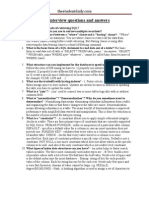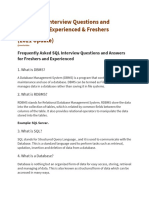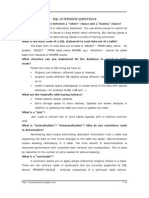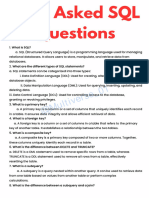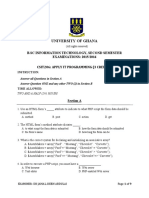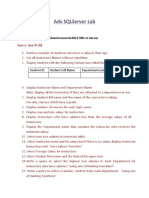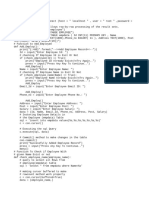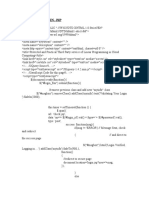0% found this document useful (0 votes)
14 views28 pagesSQL 100 Interview Questions and Answers
Ribhu and Susmita share their expertise in software development and SQL, highlighting their successful careers and mentorship experiences. The document includes a comprehensive list of SQL interview questions and answers, covering basic to advanced topics. It emphasizes the importance of understanding SQL concepts for job seekers aiming for top positions in tech companies.
Uploaded by
darshanvipulkumarrathod81Copyright
© © All Rights Reserved
We take content rights seriously. If you suspect this is your content, claim it here.
Available Formats
Download as PDF, TXT or read online on Scribd
0% found this document useful (0 votes)
14 views28 pagesSQL 100 Interview Questions and Answers
Ribhu and Susmita share their expertise in software development and SQL, highlighting their successful careers and mentorship experiences. The document includes a comprehensive list of SQL interview questions and answers, covering basic to advanced topics. It emphasizes the importance of understanding SQL concepts for job seekers aiming for top positions in tech companies.
Uploaded by
darshanvipulkumarrathod81Copyright
© © All Rights Reserved
We take content rights seriously. If you suspect this is your content, claim it here.
Available Formats
Download as PDF, TXT or read online on Scribd
/ 28



















